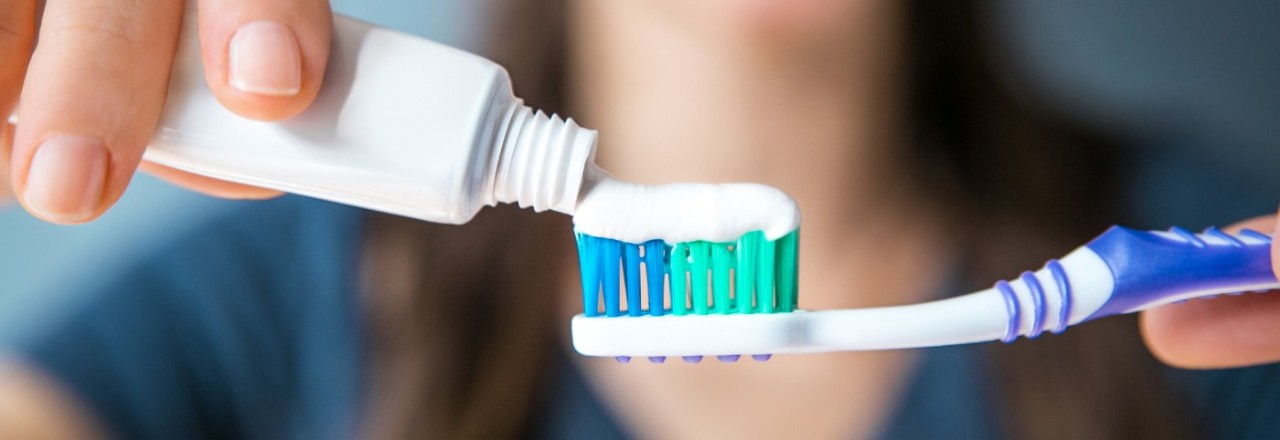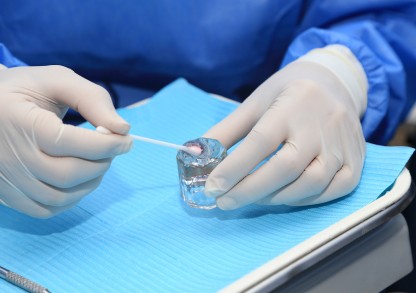What you should know about fluoride

In the early 1900s, researchers in Colorado discovered a mysterious condition — residents of certain towns were unusually resistant to decay. After chasing down theories, a sophisticated water test was performed on one town’s water supply and what they found shocked them. The water contained high levels of a natural mineral called fluoride.
What is fluoride?
Fluoride is a naturally occurring mineral compound found in water and soil. It is also present in foods and beverages at varying concentrations. Fluoride helps prevent tooth decay by making the entire tooth surface more resistant to acid attacks from the bacteria that live in the plaque on your teeth.
Fluoride also promotes remineralization, a process of adding minerals such as calcium back into your teeth. Remineralization aids in repairing early decay before a cavity (hole) forms in the tooth. There are two ways to increase fluoride protection: topical and systemic applications.
What is topical fluoride?
Topical fluoride is applied directly to and absorbed by the surface of the teeth. It is found in personal oral hygiene products such as toothpastes and mouth rinses, which contain a safe and effective concentration of fluoride to fight tooth decay. These products are rinsed from the mouth without swallowing.
Professionally administered topical fluorides such as foams, gels or varnishes are applied by a dentist and left on for a few minutes, usually during a cleaning treatment. For patients with a high risk of cavities, the dentist may prescribe a special gel or toothpaste for daily home use.
What is systemic fluoride?
Systemic fluoride is taken into the body through consuming fluoridated water, fluoride supplements or foods and beverages. Once systemic fluoride is absorbed via the gastrointestinal tract, the blood distributes it throughout the entire body. Fluoride is then deposited into unerupted, developing teeth.
Systemic fluoride is also found in saliva and it continually bathes the teeth, providing a topical application to protect teeth.
How do I know if my toothpaste contains fluoride?
Check the label on your toothpaste to see if fluoride is an ingredient. You should also check for the ADA (American Dental Association) Seal of Approval to ensure that your toothpaste contains the proper amount of fluoride. If it's not fluoridated, consider switching.
-
What is fluoridated water?
Water fluoridation is the adjustment of fluoride levels in the community water supply to the optimum level to protect oral health. By simply drinking tap water in communities with a fluoridated water supply, people can benefit from fluoride's protection from decay. Community water fluoridation has been implemented in the United States for over 75 years and has proven to be the single most effective public health measure to prevent tooth decay in adults and children.
Water fluoridation is endorsed by nearly every major national and international health organization including the American Dental Association, American Medical Association, World Health Organization and the Centers for Disease Control and Prevention (CDC).
-

How do I find out if the water in my community is fluoridated?
The easiest and most accurate way to find out is to contact your local water company and ask. The CDC offers an interactive tool called My Water's Fluoride to let you learn the fluoridation status of your local water system.
What if I drink mostly bottled water?
If most of your water comes in the form of bottled water, you are missing out on the valuable fluoride found in tap water, which helps to protect teeth from cavities. In most cases, the fluoride concentrations in bottled water (even in some that are fluoridated) fall below the U.S. government's recommended range of 0.7 to 1.2 parts per million (ppm) of fluoride, the ideal range to prevent cavities.
If you drink mostly bottled water, talk to your dentist about fluoride supplements (tablets or drops), fluoride mouth rinses or topical fluoride gels.
Are children more sensitive to fluoride?
Fluoride is absorbed easily into tooth enamel, especially in children's developing teeth. In young children, excess fluoride intake can cause dental fluorosis, typically a harmless cosmetic discoloring or mottling of the enamel, visible as chalky white specks and lines or pitted and brown stained enamel on teeth.
Parents should monitor the use of toothpaste, mouth rinses and fluoride supplements in young children to ensure they are not ingesting too much. Check with your dentist on the proper amount of toothpaste to use or the proper dosage of a fluoride supplement.
If you’re concerned about the fluoride levels in your drinking water, call your local public water department or water supplier. If the source is a private well, request a fluoride content analysis from your local or county health department to ensure that the fluoride levels are within the proper range.
Last updated December 20, 2022
Related articles:
The oral health information on this website is intended for educational purposes only. Always consult a licensed dentist or other qualified health care professional for any questions concerning your oral health.


